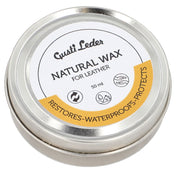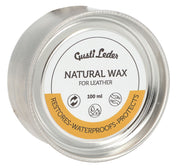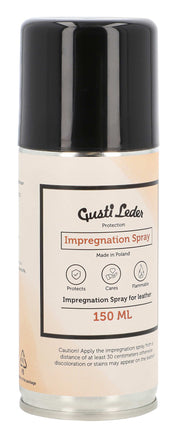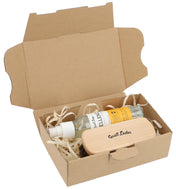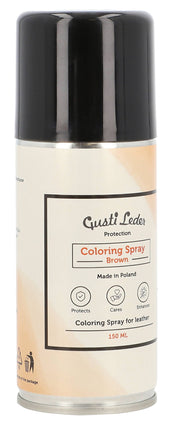Chrome tanning general
It wasn't until 1858 that people began experimenting with chromium salts in tanning. Chrome tanning quickly became the predominant tanning method, and only the discovery of chrome tanning made the current diversity in the leather industry possible. This tanning method is now used for around 85% of global leather production, primarily for clothing leather, shoe upper leather, and upholstery leather.

Properties of chrome-tanned leather
Leather tanned with chromium salts is twice as tear-resistant as vegetable-tanned leather. It's also lighter, as the chromium salts don't fill the hide during tanning. The tanning process is also faster and uses less material, further reducing costs.
Particularly popular is so-called "wet blue" leather, which is still wet after tanning during production. This open-pored leather with its characteristic bluish hue is easy to store and can be transported worldwide.

Chromium VI tanning
The news repeatedly reports dangerous chromium levels in leather products. In particular, the environmentally harmful chromium VI is mentioned. However, chromium III is regularly used in tanning and is harmless to health. It generally does not cause allergic reactions, despite the intensive skin contact in shoe and clothing leather.
Production errors can cause harmful chromium VI to enter the leather and pose a risk to the end consumer. Chromium VI can only be found in leather products tanned with chromium III under very specific conditions. Inhaling chromium VI dust is considered carcinogenic, but it cannot develop in leather. The remaining allergy risk from everyday leather use is low. Only a tiny fraction of the population (approximately 0.5%) has a chromium allergy.

Ecology in chrome tanning
Chrome tanning produces waste materials and chromium-containing wastewater that must be properly treated and recycled. Modern tanneries recover valuable substances and thus bind almost 97% of the chromium used. This minimizes wastewater pollution and saves costs.

Chrome in production at Gusti Leder
At Gusti Leder, we can guarantee very high tear resistance for all chrome-tanned products. All products in the Gusti Leder studio line are chrome-tanned. The major producers of the Gusti Leder studio series adhere to international production standards such as SA 8000. Regular laboratory tests ensure that all leather types from the producers comply with the guideline values for chromium VI. These tests are conducted by recognized laboratories in India as well as by TÜV SÜD.
<iframe width="560" height="315" src="https://www.youtube.com/embed/Wgwy_TkQtWo?list=PLQDROQtNghb8q90jdw6gkWHdijkk9ybtH&ecver=1" frameborder="0" allow="accelerometer; autoplay; encrypted-media; gyroscope; picture-in-picture" allowfullscreen></iframe>
additional sources (accessed 7.11.2018)
-
leder-info(dot)de/index.php/Chromgerbung
-
lederzentrum(dot)de/wiki/index.php/Chromgerbung
-
oeko-fair(dot)de/clever-consumption/clothing-jewelry/leather/production6/tanning/chrome-tanning

